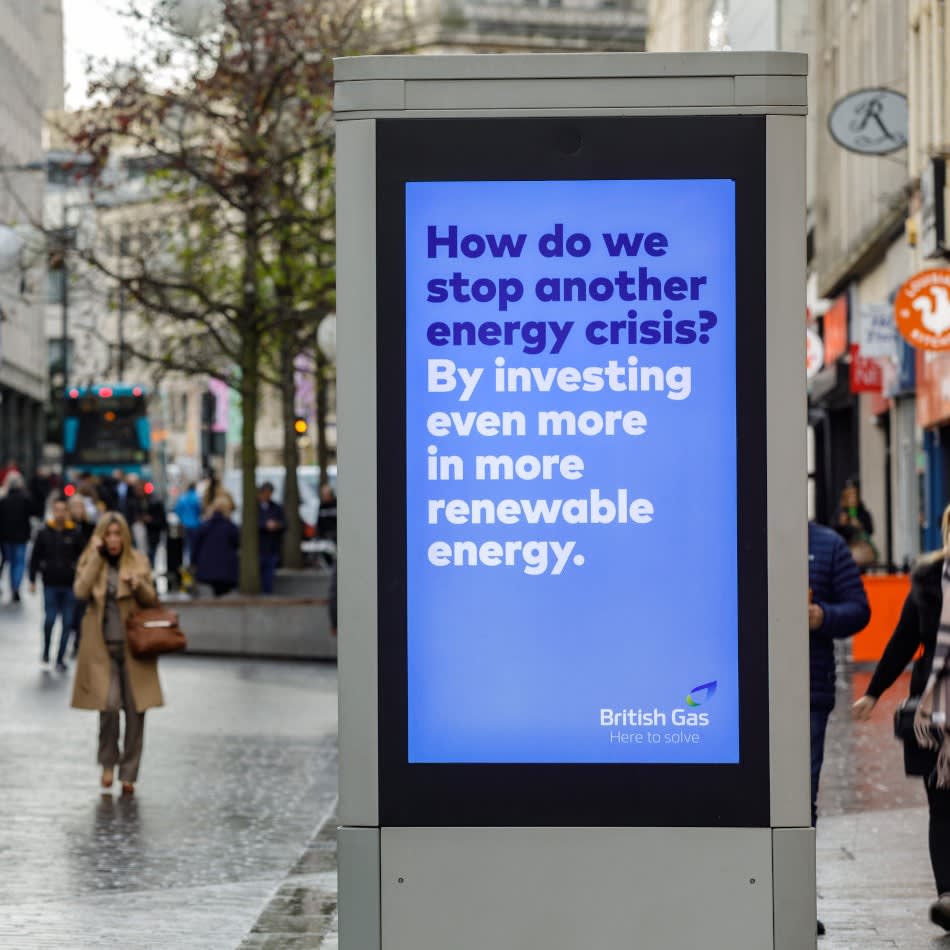There have been huge developments in traditional media over the past few years and the OOH landscape in particular has changed vastly. Advertisers can now run campaigns built from the ground up on data and accuracy, thanks to new technology and creative innovation.
We’re keen to bust outdated misconceptions around OOH because there’s so much that advertisers stand to gain from it – here are just three of the reasons why you should choose Out of Home.
1. Brand building
If brand awareness is your goal, there’s little that will help you achieve it more than OOH advertising. This is for three main reasons:
Broad reach – 98% of the population experience OOH advertising at least once a week. It’s near impossible for other media to compete with the level of exposure that OOH provides.
Consumer trust – only those with something to hide shy away from visibility. By placing your brand in the real-world public arena, you give it an extra degree of legitimacy, which is why 40% of people say they trust this type of advertising (which is more than TV or newspapers).
Brand recall – most people pass by the same places every day and therefore see the same adverts every day. Repeat impressions help to cement information in the brain, making brand recall far more likely over time.
Another key brand-building benefit of OOH is that the ads can’t be ignored. Ad blockers don’t work on them, they can’t be skipped, and the audience can’t simply go somewhere else. On top of this, it’s one of the most rewarding forms of media in terms of ROI.
One of the standout innovations in the OOH space over the last few years has been the integration of movement data into campaign planning. By overlaying customer movement onto common pedestrian or vehicular routes, we can see where the most effective advertising spots are. Advertisers can then implement multi-touchpoint journeys along popular routes. Using these touchpoints to tell a story or to reinforce the same messaging further drives lasting brand awareness.
2. Influencing buyers through DOOH
Most marketing objectives can be distilled into one of three categories: reach, activation, or fame. With 45% of consumers saying that they respond to OOH – most commonly in the form of store visits, online searches, and online purchases – Out of Home advertising can help marketers to achieve any one of these objectives. Digital Out of Home (DOOH) takes this to the next level.
Heightened creativity
The technology behind DOOH screens allows room to be more creative – both visually and strategically. Programmatic buying options mean advertisers can adapt their campaigns in real time, while the ability to add movement to visuals paves the way for more eye-catching designs.
Interactive communication
DOOH also enables interactive communication with customers. For example, adding a sign-up QR code to an advert allows the advertiser to capture data immediately. It’s no longer necessary to hope that your ad is effective enough to activate customers at a later date – you can push them through to the next stage of the funnel there and then. Opening up a two-way line of communication like this means advertisers can quickly understand their ad’s effectiveness.
QR code scanning and other interactive features present the opportunity to add a second touchpoint immediately after the first. When social media is incorporated into DOOH campaigns, this touchpoint can be used to encourage conversation and build a buzz.
Contextual relevance
DOOH screens aren’t static, so there’s great flexibility when it comes to booking inventory. Ads from different brands can be put on rotation, with each advertiser able to choose the time that makes the most sense for their target audience. The contextual relevance of an ad can therefore be factored in, which is proven to increase an ad’s effectiveness by 17%.
Dynamic ads take the idea of contextual relevance even further by displaying a different creative depending on who the primary audience is at any given point.

3. Pinpoint audience targeting
Audience targeting is arguably the area of OOH that’s seen the biggest evolution over the last decade. Segmenting and accurately targeting audience groups has traditionally been harder in the offline world than the online but that’s all changed, thanks to new technology revolutionising the process.
Tools such as Radar use aggregated, anonymous mobile data to form a picture of which audience groups pass by which sites. This means advertisers can come to us with a list of audience criteria and we’re able to locate the sites with the highest reach to those people. Rather than using logical reasoning to deduce the most effective campaign parameters, we can instead provide this information with cold, hard data. It’s a case of certainties rather than assumptions.
Advertisers can find audiences using behaviour, demographics, locations and interests, with the data updated weekly to keep up with changing behaviour. Unprecedented flexibility and precision mean you won’t just know how many eyes have seen your ad – you’ll also know whose eyes.
Out of Home advertising with purpose
Out of Home pulls together all of the elements that bring an advertising campaign to life. The collective influence of a large network of screens, digital flexibility and advanced audience measurement techniques ensure the delivery of campaigns that fulfil their purpose.
As a Platform for Good, Clear Channel helps brands to grow from a conscientious perspective. Our OOH furniture is part of public spaces and with that comes a civic responsibility, which we take seriously. To learn more about Out of Home or our work as a Platform for Good, get in touch with our friendly team today.
Start your OOH campaign today
Interested in learning more about OOH advertising? Fill in our form and one of our team will be in contact shortly to answer your questions and get started on your next campaign.



